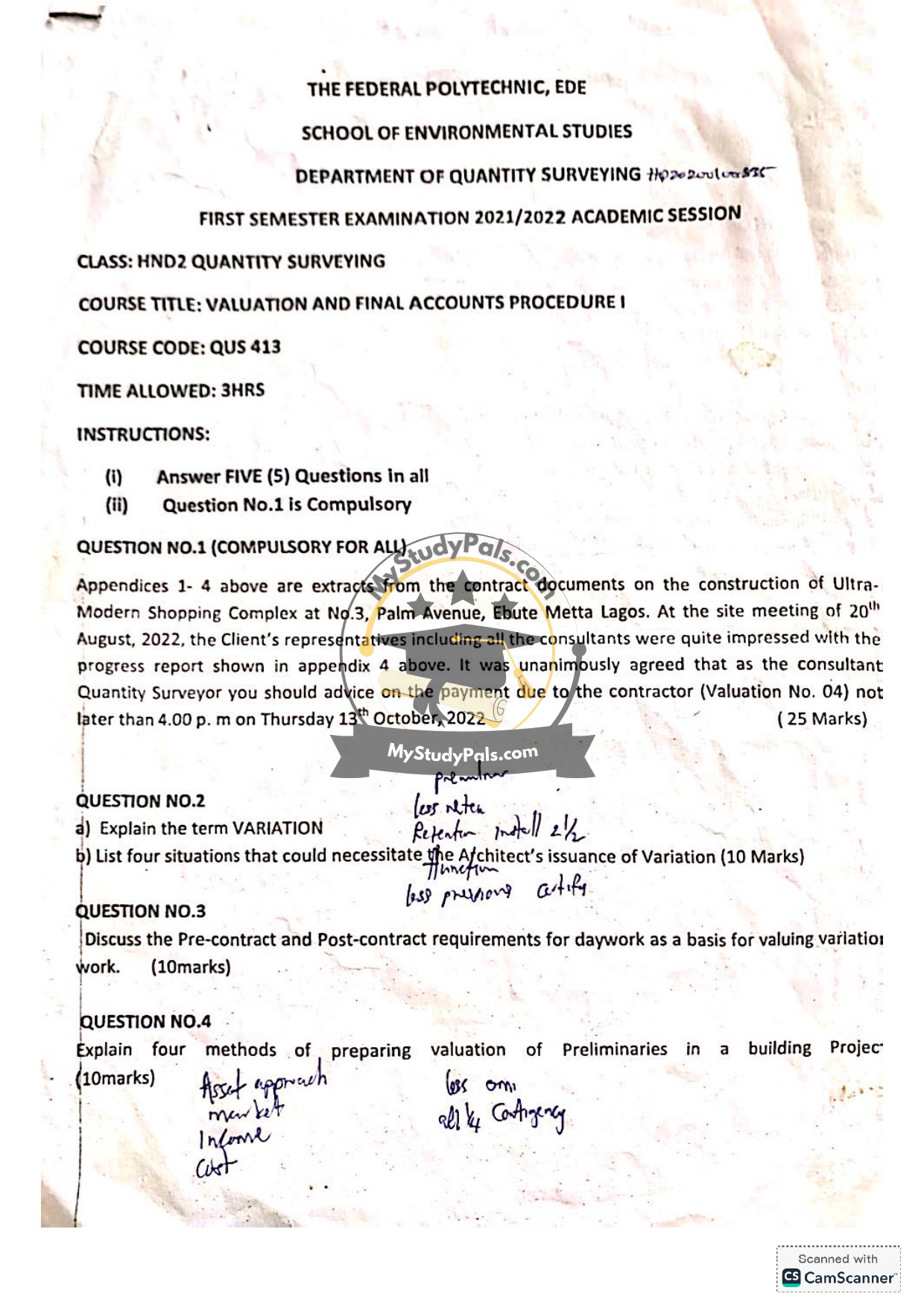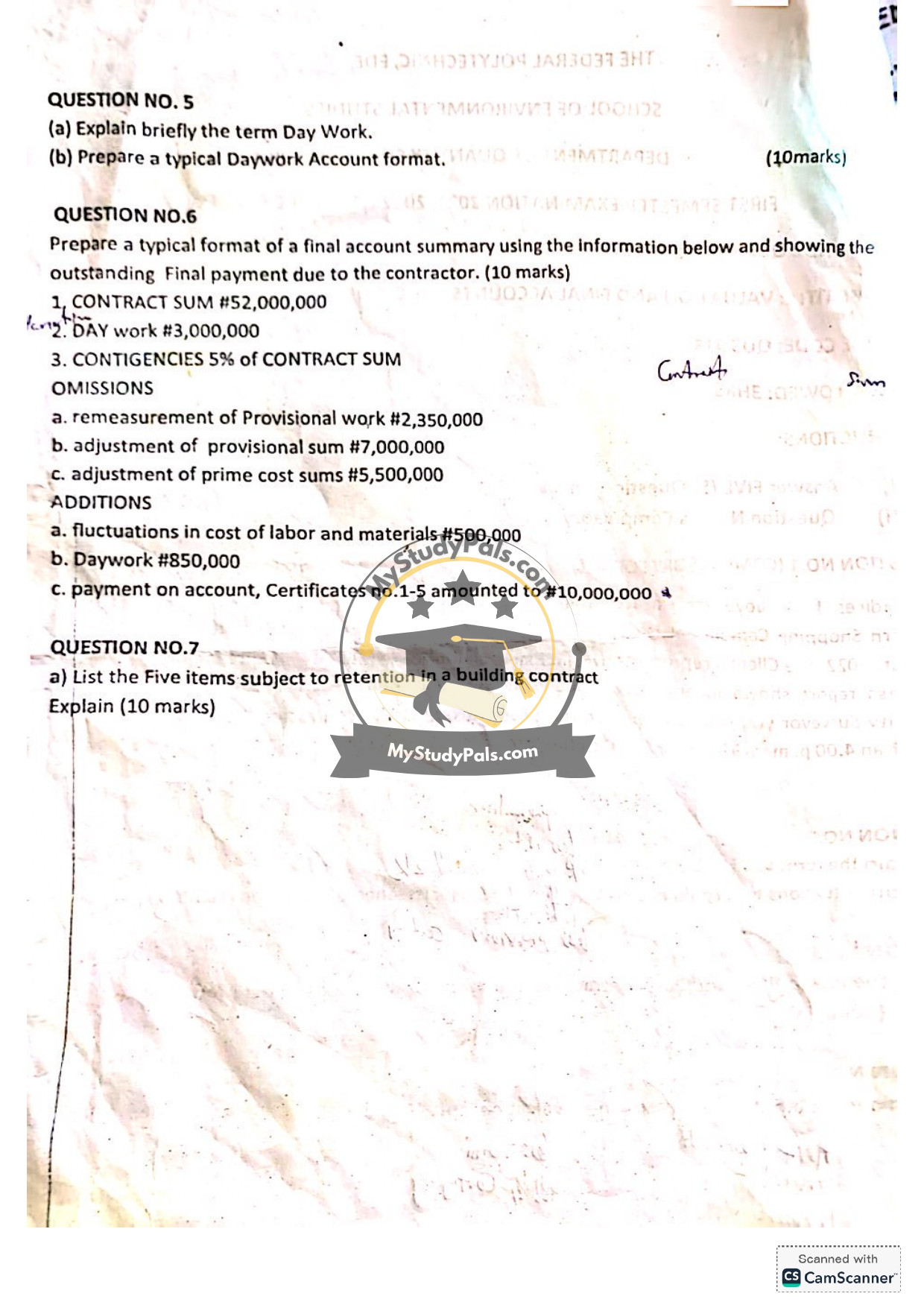ANWSER
Question 1:
Answer:
To determine Valuation No. 04 (payment due to the contractor), the Quantity Surveyor would:
1. Assess the work completed (based on Appendix 4 progress report).
2. Calculate the value of materials on-site (if applicable).
3. Adjust for approved variations and dayworks.
4. Deduct retention (e.g., 5% of certified sums).
5. Subtract previous payments (Certificates No. 1–3).
6. Prepare an interim certificate with the net amount payable.
*(Note: Specific figures depend on appendices not provided here.)*
—
Question 2:
(a) Variation refers to any alteration to the original scope, design, quality, or quantity of work in a construction contract, initiated by the client, architect, or unforeseen conditions.
(b) Situations necessitating Variation:
1. Client-requested design changes.
2. Unforeseen site conditions (e.g., hidden obstructions).
3. Regulatory/statutory requirement changes.
4. Errors or omissions in the original contract documents.
—
Question 3:
Pre-contract requirements for daywork:
– Define daywork rates (labor, materials, plant) in the contract.
– Specify documentation procedures (e.g., timesheets, receipts).
Post-contract requirements for daywork:
– Record daily labor hours, material usage, and plant time.
– Obtain signatures from the contractor and architect/engineer for verification.
– Submit detailed accounts promptly for inclusion in interim valuations.
—
Question 4:
Methods of valuing Preliminaries:
1. Time-Based Apportionment: Allocate prelim costs based on project duration (e.g., monthly).
2. Percentage of Contract Sum: Apply a fixed percentage to the total contract value.
3. Fixed Lump Sum: Agree on a fixed amount for preliminaries upfront.
4. Activity-Based Allocation: Link prelim costs to specific project phases (e.g., foundation, superstructure).
—
Question 5:
(a) Day Work involves work valued based on hourly/daily rates for labor, materials, and plant, used when work cannot be measured under standard contract rates.
(b) Typical Daywork Account Format:
| Item | Quantity | Rate (#) | Amount (#) |
|—————-|————–|————–|—————-|
| Labor (e.g., 8hrs) | 8 | 5,000 | 40,000 |
| Materials (e.g., cement) | 50 bags | 4,000 | 200,000 |
| Plant (e.g., excavator) | 1 day | 30,000 | 30,000 |
| Total | | | 270,000 |
—
Question 6:
Final Account Summary:
| Item | Amount (#) |
|——————————|——————–|
| Original Contract Sum | 52,000,000 |
| Additions | |
| Fluctuations | +500,000 |
| Daywork | +850,000 |
| Omissions | |
| Remeasurement of Provisional | -2,350,000 |
| Adjustment of Provisional Sum | -7,000,000 |
| Adjustment of Prime Cost Sums | -5,500,000 |
| Subtotal | 38,500,000 |
| Contingencies (5% of contract)| +2,600,000 |
| Adjusted Contract Sum | 41,100,000 |
| Less: Payments on Account | -10,000,000 |
| Final Payment Due | 31,100,000 |
—
Question 7:
(a) Five items subject to retention:
1. Defective work requiring rectification.
2. Uncompleted minor works.
3. Unresolved claims/disputes.
4. Outstanding documentation (e.g., as-built drawings).
5. Materials not yet incorporated into the works.



